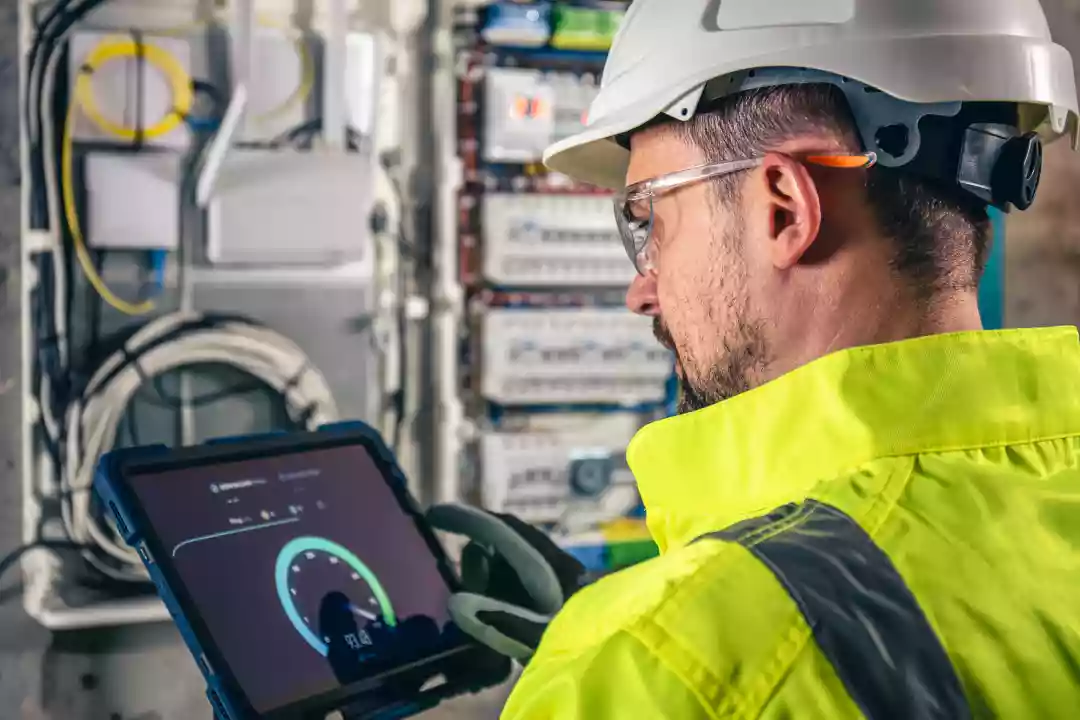Earth Continuity and Leakage Test
The first step in an electrical inspection is to check the Earth Continuity and Leakage Test. This test involves checking the resistance of an earth loop in order to ensure that the equipment and wiring are protected from electric shock. It also helps to detect faults in the system, such as loose connections, damaged conductors, and other issues. An electrician will use a specialised device known as an insulation tester to measure the resistance of an earth loop. Once this step is complete, the electrician can then move on to carrying out the Insulation Resistance Test.
Insulation Resistance Test
The Insulation Resistance Test is performed to make sure that the electrical system is fault-free and that all of the insulation materials are in good condition. The electrical resistance between two places of the system will be measured by the electrician using a specialised tool to see if it complies with the specified limits. This test is intended to find any systemic abnormalities, such as frayed wires, damaged conductors, and other concerns. Other tasks that the electrician will perform include looking for any combustible materials near the wires and looking for any indications of overheating.
By applying a voltage between two points and measuring the resulting current flow, an insulation resistance test (IR test) determines the electrical resistance of insulation. When doing this test, appropriate safety measures must be performed, including creating exclusion zones, checking that no wires are exposed, and wearing personal protection equipment. An insulation resistance tester, which can range in size from a small, battery-operated hand-held instrument to a bigger, luggage-sized tool capable of achieving greater test voltages, is required to do this test.

Need assistance finding electrical inspections near you?
Get a QuoteNon-Live And Live Testing
Once the insulation resistance test has been completed, the electrician will then move on to carrying out Non-Live and Live Testing. This type of testing involves using a series of devices to determine the resistance of the electrical system, including the ground loop impedance and the resistance of the circuit breaker. The electrician will also check the live parts of the system, such as switches, sockets, and appliances, to ensure that they are functioning correctly. This type of testing helps identify any issues with the electrical system before they become serious.
RCDs and RCBOs, which respond to electricity leaking from the circuit, are regularly installed and examined on modern electrical systems. When someone touches a live part, leakage may occur because the electricity may go via the person's body rather than the usual circuit return path. Surge protection devices (SPDs) protect the electrical setup, including the consumer unit, wiring, and accessories, from dangerous power surges known as transient overvoltages. SPD checks are performed as part of the electrical safety test.
EICR
Following the Non-Live and Live Testing, the electrician will then move on to conduct an Electrical Installation Condition Report or EICR. This report is an important document that details the condition of the electrical system at the property. It identifies any potential hazards, such as exposed wiring, loose connections, and any other potential problems. The EICR will also provide an overall assessment of the electrical system, including a recommendation for any necessary repairs and alterations.
In the event that anything hazardous or potentially hazardous is discovered, the overall state of the electrical installation will be graded "unsatisfactory", necessitating immediate repair work to lower hazards to local residents. The following categories are used to classify faults:
C1 - The necessity for immediate remedial action.
C2 - Possibly hazardous.
C3 - Improvement is needed.
FI - Additional research is necessary.
Means Of Protection
The last step in an electrical inspection is to ensure that the property has the right means of protection from electrical hazards. These include the installation of surge protectors, residual current devices (RCDs), smoke detectors, and other safety devices. The electrician will inspect these devices to make sure that they are all functioning correctly and that the property is adequately protected against electrical shocks. By doing so, the electrician can ensure that the property is safe and that any electrical hazards are eliminated.
In conclusion, a crucial procedure that assures the effectiveness and safety of your home's electrical system is an electrical inspection. Any possible flaws or issues with the electrical system can be found using a variety of tests and inspections that a skilled electrician can perform. This covers testing for earth continuity and leakage, insulation resistance, non-live and live testing, EICR, and making sure the building has the appropriate safeguards against electrical risks.
In this article:
